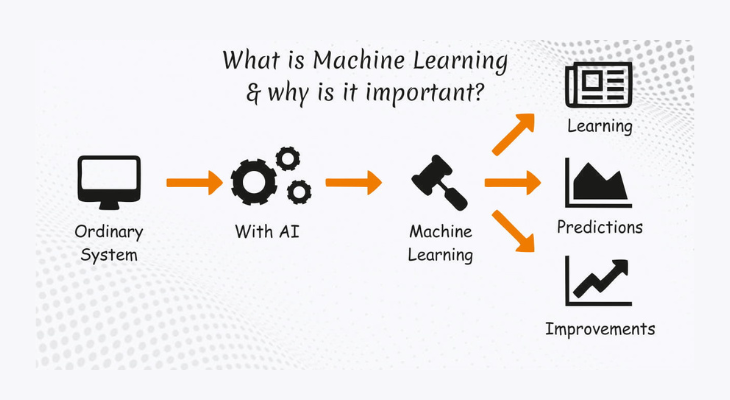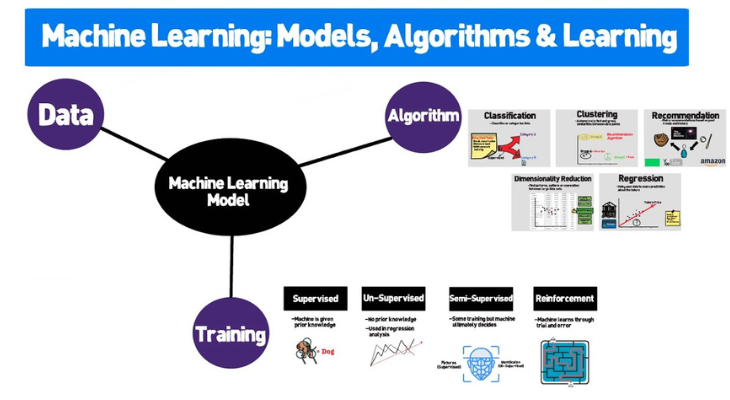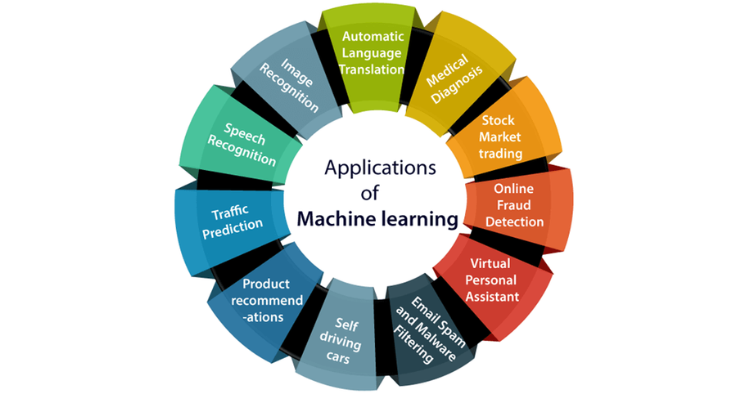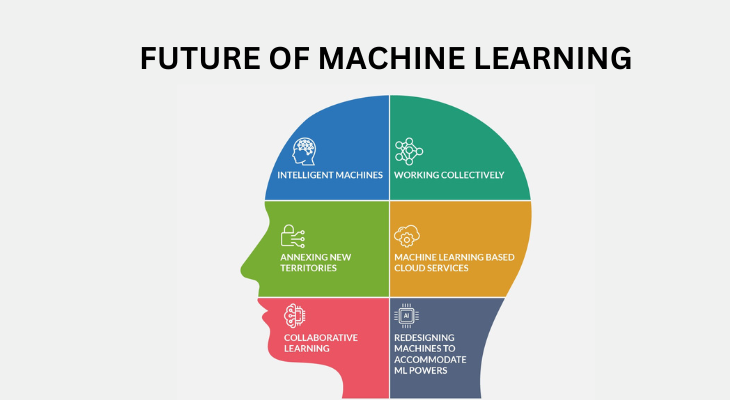Machine learning importance: Applications

In today’s fast-paced digital age, Machine Learning (ML) has emerged as a game-changer. But what exactly is machine learning, and why is it so important? Let’s delve into the world of ML to understand its significance and its impact on various industries.
Table of Contents
ToggleWhy is machine learning important?

Since the mid-20th century, when artificial intelligence (AI) pioneers like Walter Pitts, Warren McCulloch, Alan Turing, and John von Neumann created the foundation for computation, machine learning has become an increasingly important part of human society. Organizations can now automate repetitive operations that were previously completed by humans thanks to robots’ ability to learn from data and get better over time. This should free up human resources for more strategic and creative work.
Additionally, machine learning completes manual activities that humans are unable to complete on a large scale, such as processing the massive amounts of data produced by digital devices nowadays. In industries ranging from banking and retail to healthcare and scientific research, machine learning’s capacity to draw patterns and insights from enormous data sets has emerged as a competitive difference.
Advantages and Disadvantages of Machine Learning Language
Each coin has two faces, each with unique characteristics. It’s time to reveal ML’s many facets. An extremely effective instrument with the capacity to completely alter the way things operate.
Advantages of Machine learning
1.Easily identifies trends and patterns
Large amounts of data can be reviewed by machine learning, which can identify particular trends and patterns that people would not see. For example, it helps an e-commerce site like Amazon provide consumers with the appropriate products, promotions, and reminders based on their browsing habits and past purchases. It shows them relevant adverts based on the results.
2.No human intervention needed (automation)
You don’t have to oversee your project constantly while using ML. It allows machines to learn, which enables them to make predictions and enhance algorithms on their own. Anti-virus programs are a prominent example of this; as new dangers are identified, they are trained to filter them. Additionally, ML excels at identifying spam.
3.Continuous Improvement
The accuracy and efficiency of ML algorithms continue to increase with experience. They may now make wiser decisions as a result. Assume you have to create a model for weather forecasts. Your algorithms become more adept at producing predictions with greater accuracy as your data collection grows.
4.Handling multi-dimensional and multi-variety data
Multi-dimensional and multi-variety data can be handled well by machine learning algorithms, even in dynamic or uncertain contexts.
5.Wide Applications
ML can be used to your advantage if you’re an online retailer or a healthcare service. When used appropriately, it may assist target the correct customers and provide a far more personalized experience for them.
Disadvantages of Machine Learning
1.Data Acquisition
Training large-scale machine learning models requires high-quality, inclusive, and unbiased training datasets. They might occasionally have to wait for fresh data to be created.
2.Time and Resources
For machine learning (ML) to be effective, algorithms must have enough time to learn and grow before they can be used with a significant degree of accuracy and relevance. For it to work, enormous resources are also required. This may indicate that you need to use more computer power. Moreover, view machine learning’s future.
3.Interpretation of Results
Accurately interpreting the algorithmic outputs is another significant challenge. Additionally, you need to pick the algorithms carefully for your needs.
4.High error-susceptibility
While autonomous, machine learning is quite error-prone. Assume you use sufficiently tiny data sets to train an algorithm so that it is not inclusive. As a result of using a biased training set, you get biased predictions. Customers end up seeing irrelevant advertisements as a result. Such mistakes in machine learning (ML) might initiate a series of mistakes that remain undiscovered for extended periods of time. Furthermore, it takes a while to identify the problem’s origin and much longer to fix it when they are discovered.
How to select and construct an appropriate machine learning model

It can be difficult to create the ideal machine learning model to handle a given problem. Building an ML model involves experimentation, ingenuity, and diligence, as outlined in the seven-step strategy that is summarized here.
- Recognize the issue facing the company and establish success standards. The purpose is to translate the group’s understanding of the project’s goals and the business problem into a problem formulation that is appropriate for machine learning. It is important to ask why machine learning is needed for the project, what kind of algorithm best suits the challenge, if transparency and bias reduction are necessary, and what the expected inputs and outputs are.
- Recognize and define the data requirements. Assess the data to see if it is suitable for model ingestion and what is needed to build the model. How much data will be required, how the data will be divided into training and test sets, and whether or not a pre-trained machine learning model may be applied are all important questions to ask.
- Gather and ready the information needed to train the model. Cleaning and labeling the data, replacing inaccurate or missing data, augmenting and improving the data, eliminating ambiguity and noise, anonymizing personal data, and dividing the data into training, test, and validation sets are some of the actions that are taken.
- Ascertain the features of the model and train it. Make the appropriate algorithm and approach choices. After the model has been trained and validated, optimize it by adjusting its hyperparameters. Machine learning algorithms can include natural language understanding features like recurrent neural networks or transformers made for NLP tasks, depending on the type of business problem. Decision tree models can also be optimized through the use of boosting algorithms.
- Assess the model’s functionality and set standards. Confusion matrix computations, business KPIs, machine learning metrics, model quality assessments, and assessing the model’s ability to achieve business objectives are all included in this work.
- Implement the model and track its effectiveness in real-world settings. The term for this stage of the process is “operationalizing the model,” and data science and machine learning engineers usually work together to complete it. Iterate to increase overall performance by measuring the model’s performance on a regular basis and creating a benchmark to compare it to in the future. Environments for deployment can be on-site, in the cloud, or at the edge.
- Make constant improvements and modifications to the production model. The work doesn’t end when the ML model is put into production and kept an eye on constantly. Unexpected changes in real-world data, technological capabilities, and business requirements could result in the creation of new demands and specifications.
Machine learning applications for enterprises

These days, machine learning is a crucial component of the business software that powers businesses. Here are some instances of how machine learning is used in different fields:
- Business knowledge. Machine learning methods, such as logistic and linear regression, are used by BI and predictive analytics software to find important data points, trends, and anomalies in massive data sets.
- Relationship management with customers. In CRM, machine learning is primarily used for customer data segmentation, fraud detection, recommendation-making, price adjustments, email campaign optimization, churn prediction, and support for chatbots.
Machine learning examples in industry
Several industries have embraced machine learning. The following industries are adopting machine learning to suit market demands:
- Monetary services. Financial services organizations use machine learning in risk assessment, algorithmic trading, client service, and personalized banking. For instance, Capital One used machine learning (ML) for credit card protection, which falls under the larger umbrella of anomaly detection.
- Prescription drugs. ML is used by pharmaceutical companies in clinical trials, drug discovery, and medication production. For instance, Eli Lilly has developed AI and ML models to identify the ideal locations for clinical trials and increase participant diversity. The company claims that the models have significantly shortened the duration of clinical trials.
- Production. Use cases for predictive maintenance are common in the manufacturing sector, where costly production delays can result from equipment failure. Furthermore, machine learning’s computer vision component may check products as they leave a manufacturing line to provide quality control.
- Coverage. Recommendation engines are able to provide options to customers based on both their needs and the experiences of other users with particular insurance products. Processing claims and underwriting both benefit from machine learning.
- Retail. Retailers utilize computer vision for inventory management, personalizing, and designing the styles and colors of a particular fashion line in addition to recommendation systems. One such important use case is demand forecasting.
What is the future of machine learning?

Driven by copious amounts of research conducted by corporations, academic institutions, and governments worldwide, machine learning is a rapidly evolving field. AI and ML breakthroughs appear to occur every day, making conventional wisdom nearly instantly out of date. About machine learning, one thing is certain: it will remain a major force in the twenty-first century, revolutionizing both the way we live and conduct business.
In NLP, enhanced infrastructure and algorithms will result in more conversational AI that is more fluent, more versatile machine learning models that can adjust to new tasks, and customized language models that are tailored to specific business requirements.
It is anticipated that the rapidly developing field of computer vision will have a significant impact on a wide range of fields, including environmental science, software engineering, healthcare, and virtual and augmented reality. As technology advances, computer vision will become more crucial for diagnosis and monitoring in these fields.
Machine learning platforms are one of the most competitive areas of enterprise technology in the near future. Prominent providers such as Amazon, Google, Microsoft, IBM, and OpenAI are vying for clients’ business by offering automated machine learning platform services that encompass a wide range of machine learning tasks, such as data gathering, data cleansing, data classification, model development, training, and application implementation.
Despite the excitement, businesses will encounter many of the same difficulties as those posed by earlier cutting-edge, quickly developing technology. Adapting legacy infrastructure to machine learning systems, minimizing ML bias, and figuring out how to best leverage these incredible new AI capabilities to produce profits for businesses despite the associated expenses are some of the new hurdles.
In today’s fast-paced digital age, Machine Learning (ML) has emerged as a game-changer. But what exactly is machine learning, and why is it so important? Let’s delve into the world of ML to understand its significance and its impact on various industries.
Conclusion
Machine learning has become an integral part of our digital age, enabling automation, data-driven decision-making, and efficiency improvements across industries. Its advantages, such as pattern recognition and automation, come with challenges related to data quality, resource requirements, and error susceptibility. Building effective machine learning models involves a structured process, and its applications in enterprises span from business intelligence to healthcare and manufacturing. The future of machine learning is marked by continuous advancements in natural language processing, computer vision, and competitive machine learning platforms, while businesses will need to navigate challenges related to legacy systems and ethical considerations.
FAQs (Frequently Asked Questions)
What are the core components of a machine learning system?
A typical machine learning system consists of three core components: data, a model, and an algorithm. Data is used for training the model, and the algorithm helps the model learn patterns and make predictions.
How do machine learning algorithms learn from data?
Machine learning algorithms learn from data through a process of training. They analyze historical data to identify patterns and relationships, and then use this knowledge to make predictions or classifications when presented with new, unseen data.
What is the difference between supervised and unsupervised learning in machine learning?
Supervised learning is a type of machine learning where the algorithm is trained on labeled data, meaning it learns to make predictions or classifications based on input-output pairs. Unsupervised learning, on the other hand, deals with unlabeled data and focuses on identifying patterns or relationships within the data itself.
What is the significance of deep learning in machine learning?
Deep learning is a subset of machine learning that focuses on artificial neural networks with multiple layers (deep neural networks). It has enabled breakthroughs in tasks like image and speech recognition, natural language processing, and has revolutionized various fields with its ability to automatically learn hierarchical representations.
How does machine learning handle bias and fairness issues?
Handling bias and fairness in machine learning involves careful data collection, preprocessing, and algorithm design to ensure that the model’s predictions are not discriminatory or unfair to specific groups. Ethical considerations and fairness assessments are crucial in addressing these issues.





2 Comments